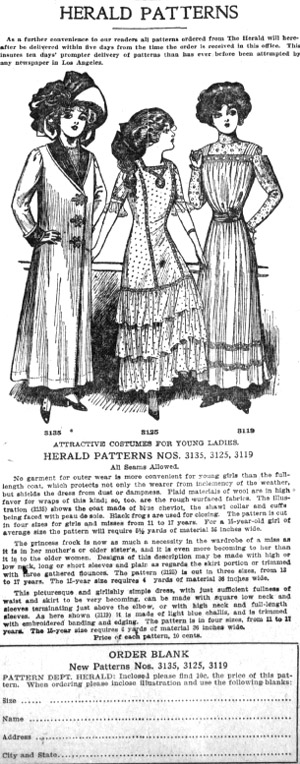California Seaports
NORTHERN CALIFORNIA: ° Alameda:
° Berkeley ° Oakland
Contra Costa County: ° Crockett, ° Martinez ° Port Costa
Marin County: ° Point Reyes, ° San Rafael (China Camp), ° Sausalito, ° Tiburon
° Mendocino ° Sacramento
San Francisco (City and County)
Solano: ° Benicia (St. Paul's Church), ° Vallejo,° Mare Island
Sonoma: ° Petaluma ° Fort Ross
CENTRAL & SOUTHERN CALIFORNIA: ° Long Beach ° Los Angeles ° Monterey County ° San Diego County ° Santa Barbara ° Santa Monica ° The Channel Islands
Santa Barbara
Carpinteria once featured a racetrack at one end of town and a gargantuan statue of Santa Claus at the other, anchoring operations highlighting this unique southern corner of coastal Santa Barbara County.

A few miles south, in the northern corner of Ventura County, nestles La Conchita, where an early seaside stagecoach route and a famous banana plantation helped shape the local flavor. The historical characteristics of Summerland, on the coast north of "Carp," as Carpinteria is known, have included a J. Paul Getty oil operation and youth baseball played on fields lighted by piped-in natural gas. The three distinct communities of Greater Carpinteria are tied together by both the spectacular coastal landscapes beautiful beaches and majestic mountain ranges as well as the area’s intrinsically linked schools and businesses. It is an eclectic paradise between Ventura and Santa Barbara that draws a million visitors a year.
In 1850, the first steamship line between San Francisco and San Diego was established, touching at San Pedro, Santa Barbara, San Luis Obispo, and Monterey. The first line was owned by a San Franciscan named Wright. In 1856 he transferred it to the California Steam Navigation Company, and they soon sold to the Pacific Coast Steamship Company. The first steamers were the Ohio, Goliah, and Fremont, while theSoutherner, Senator, and Thomas Hunt also ran at times. In later years the Ancon and Orizabawere the regular coastwise steamers. They were all side-wheelers of small tonnage. As they approached the wharf at San Diego, it was the custom to fire a cannon-shot from the bow, to give notice of their arrival.
The first steamers were the Ohio, Goliah, and Fremont, while the Southerner, Senator, and Thomas Hunt also ran at times. In later years the Ancon and Orizaba were the regular coastwise steamers. They were all side-wheelers of small tonnage.
July 6, 1905, San Francisco Call, San Francisco, California
Volume 98, Number 36
CROCKER PURCHASES THE ASPHALT MINES
Secures All the Holdings of the
Alcatraz Company in Santa Barbara.
SANTA BARBARA, July 6. The final passing of the Alcatraz Company, the concern for so many years operating the asphalt mines of this "county, was marked by the filing today of a commissioner's deed under a foreclosure of mortgage. The deed covers all of the holdings of the company in Santa Barbara County, consisting of the original mine at Carpinteria of twenty acres, of all asphalt and other mineral rights in the Ranchos Sisquoc and La Laguna Extencion 125 acres in the Cementario tract of the Rancho Refugio and the refineries of the company at Carpinteria and Alcatraz, all machinery, wharves and franchises.
The purchaser is William H,. Crocker of San Francisco, who was the founder of the asphalt industry in Santa Barbara, and who developed the business to considerable proportions before the influence of combinations resulted in the closing of the Los Angeles plants.
The amount involved, as indicated by the deed, is $490,172.15. Crocker, it is understood, held all of the bonds of the company. The plant at Alcatraz is running as an oil refinery, under lease, using the product of the Santa Maria field, piped through the Alcatraz old line from old line from Sisquoc mine. The Carpinteria refinery is also operated in a small way.
February 18, 1910, Los Angeles Herald, Los Angeles, California
ADMITS THAT S. P. RULES SEA RATES
RAILROAD MAN TELLS STORY IN NEW YORK
METHODS OF SOUTHERN PACIFIC BROUGHT OUT
Kruittschnit Takes Stand and Declares That Labor Should Take Hats Off to Railroads
[Associated Press] New York, February 17. In the continuation of the hearings of the government's suit to dissolve the Union Pacific merger today, John A. Munroe, general manager of the company, was questioned by H. N. Loomis of counsel for the defense, with respect to the practicability of the Union Pacific moving traffic through the Portland gateways to San Francisco.
"The Union Pacific officials," said Mr. Munroe, "from time to time discussed the proposition of opening the Portland gateways to San Francisco, but they always came to the conclusion that it was Impracticable and would he unprofitable to the Union Pacific. In the first place, Portland was the same distance from Omaha as was San Francisco, and the question of delay in transferring freight and making connections with the boats was considered. There was only the San Francisco business to be secured by this means, as it was determined thati Sacramento and Stockton promised no business for such a route.

"Another thing that had to be considered was the attitude of the Southem Pacific, with which we had connections to San Francisco, such a move on the part of the Union Pacific would ge considered hostile by the Southern Pacific, and it could and would retaliate by deflecting from the Union Pacific that when the Union Pacific could not get except through the influence of the Southern Pacific. Mr. Munroe denied that the Union Pacific had ever used the Portland- San Francisco boat route as a club to compel better terms from the Southern Pacific. He said on cross examination that the Southern Pacific had dominated the rate situation on the Pacific.
The pro rata division of revenues of Missouri river business to California points, Mr. Munroe said, was that of 4 per cent to the Union Pacific and 46 per cent to the Southern Pacific. Julius Kruttschnitt, vice president of both the Southern Pacific and Union Pacific and director of maintenance and operation of the merged lines, produced figures to show that the increase in the cost of labor since 1901 had reached an average of 17 per cent in all classes of employes. Since 1890, according to figures submitted by the witness, the power of labor and commodities to purchase transportation had increased 43 per cent, while there had been a decrease of 30 per cent in the power of We railroads to purchase labor and commodities.
The public had saved $154,000,000 since 1901 Mr. Kruttschnltt declared, because his railroads had not raised freight and passenger rates to meet the increased cost of commodities and labor.
WHAT IT HAS DONE
As showing what the Union Pacific has done to develop the system Mr. Kruttschnitt gave figures instancing that in the eight years ending June 30, 1909, $121,508,000 had been expended for improvements. He said that in the five years preceding the reorganization of the Union Pacific only $201,000,000 was spent for general betterments, and in the three years succeeding only $51,341000.

On the whole the witness pictured the merged system as a national benefactor that had dug deep down in its pockets to provide a railroad system of the highest efficiency.







 Copyright ~ 1998-2018.
Copyright ~ 1998-2018. 